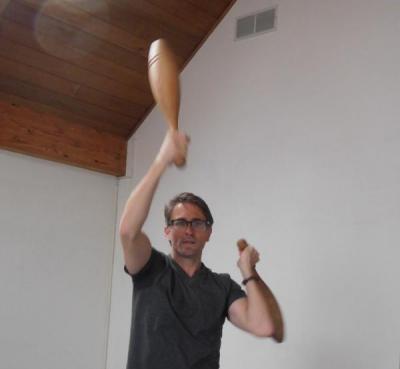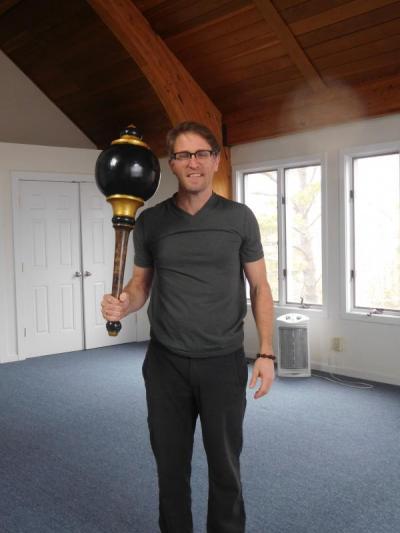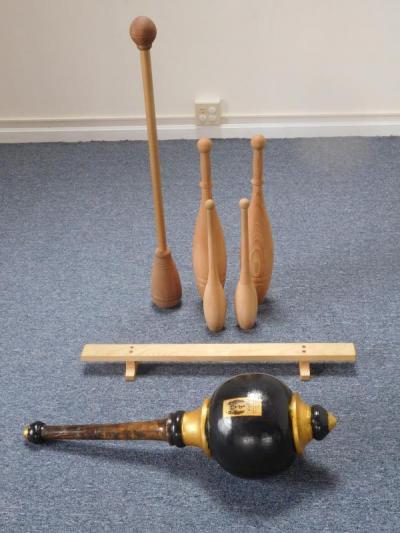Nonviolent club swinging makes for balanced exercise
MARION — Derek Notman picks up two clubs and brings them over his head. After a bit of effort to get the cycle started, the heavy clubs seem to dance in circles around his head and shoulders. Once he gets going, he can even do squats while continuing to make the clubs dance.
It’s exercise, art and job, for the Marion native, student of all things Asian and martial arts teacher
Clubs are common to use in Asian practices, as an extension of martial arts training.
Notman grew up in Marion and attended Tabor Academy, but has also traveled extensively for years. He lived in Asia, Boston and Colorado and moving back to Marion 4 years ago.
“I love the landscape, and miss the sea when I’m not here,” he said.
Along the way, Notman has studied a number of Asian practices, including tai chi and jin shun jyutsu, and acupuncture-like practice done without needles and two types of meditation.
Notman originally got into the Asian activities because he studied philosophy, and loved the way that Asian cultures integrated medical, biological, and physical systems in their work.
He currently has his own company, 12 Rivers Tai Chi & Jin Shin Jyutsu, where he offers training one on one and in small groups.
He has been working with clubs for 12 years as an extension of the martial arts he practices. He says it’s only in the last few years that he has been working with the clubs as an art form.
“The simplicity of the clubs allows the body to discover its own geometry,” he explained.
“I love the simplicity. This is my gym right now,” he said, indicating a his clubs of various sizes. He loves being able to pick them up, go to the beach and have a workout there
The clubs come from Indian and Persian traditions, where they were associated with various deities. Ancient practitioners believed that the clubs elevate strength, which enabled practitioners to stay morally upright.
With colonization, club work traveled to Victorian Britain “You can see old pictures of women in full skirts with clubs,” Notman said, but added that the practice dropped off when team sports became more popular.
Notman acknowledges that his average tri-town student working with clubs is most likely looking for help with golfing, playing tennis, or rehabilitating muscles.
Mentally, learning how to swing two objects at once is interesting because the asymmetrical movement activates the left and right hemispheres of the brain, Notman says, “you get into the pattern and have to quiet the mind.”
Overall the practice contributes to “being able to stay vital and healthy as we get older.”
Notman said that the clubs are great for “anyone with an interest and curiosity in being more in the body, or who wants to be stronger and more flexible.” ‘
Contact Notman through his website at https://12riverstaichi.com/ for more information about lessons.















